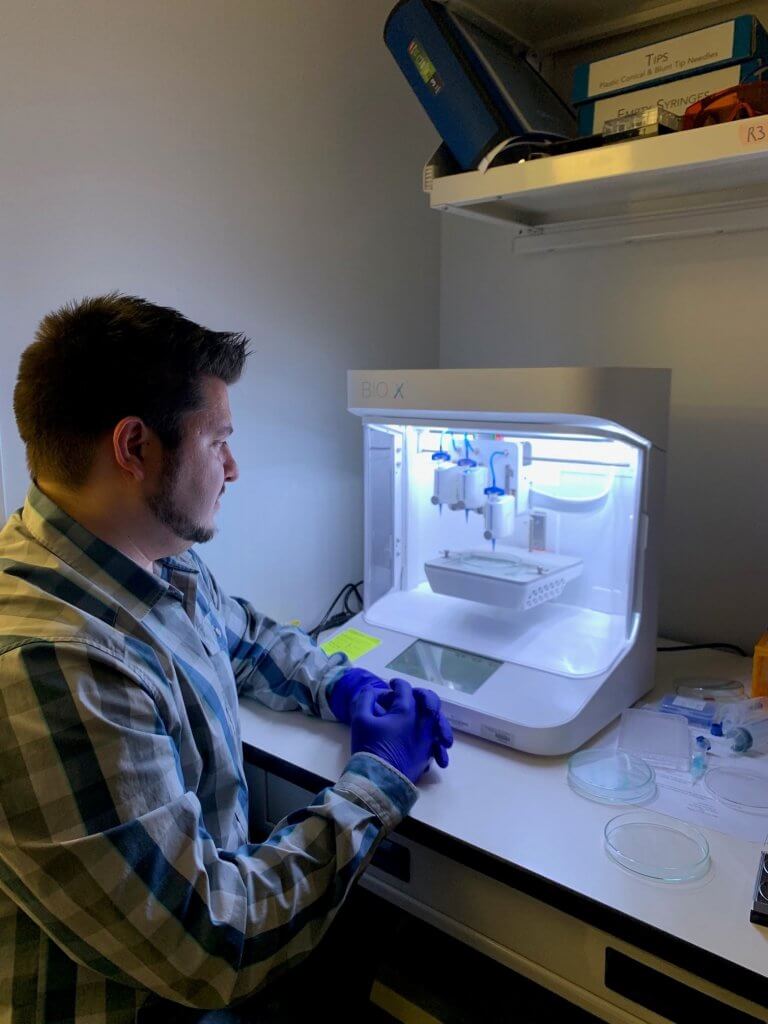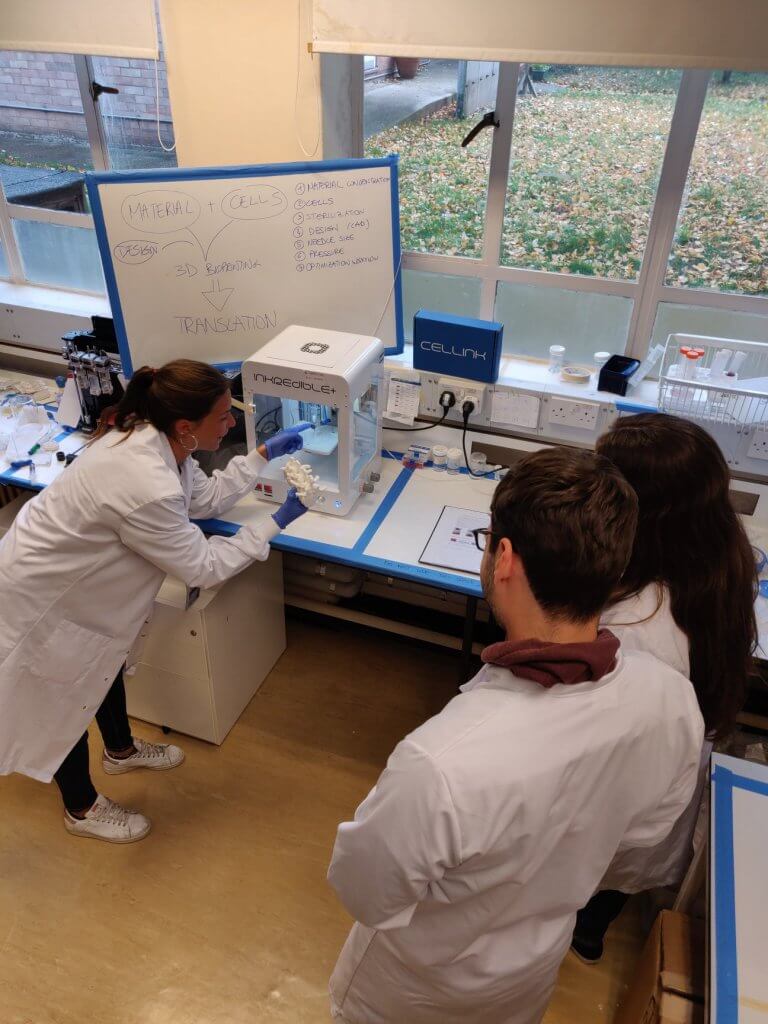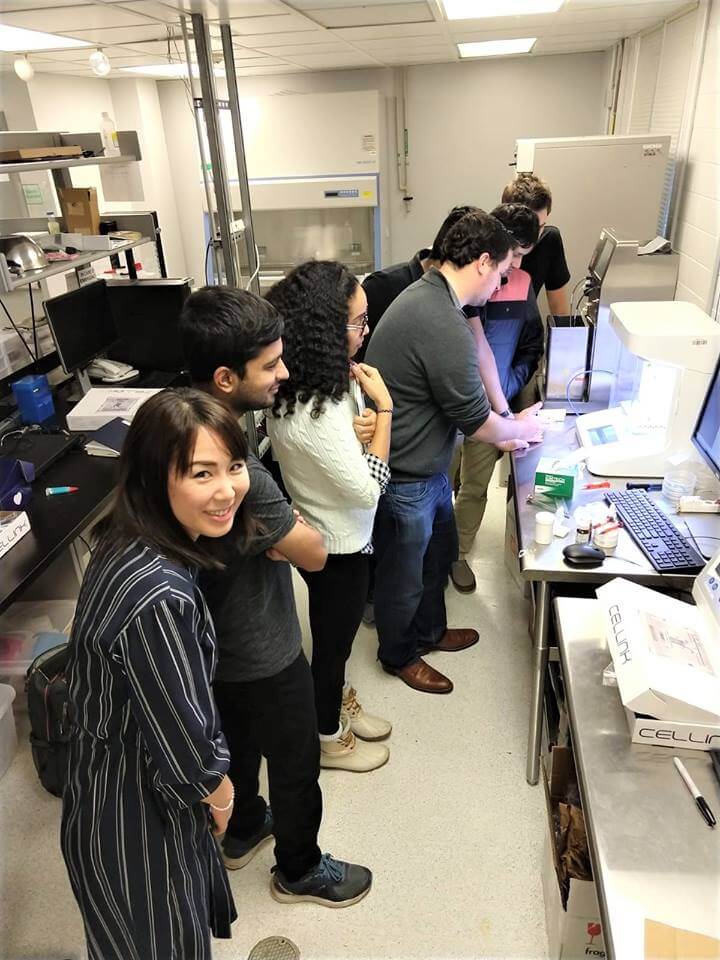Creating a sharing ecosystem for research projects in bioprinting is key to making scientific findings reproducible  and enabling fellow scientists and engineers to contribute to the evergrowing biotechnology community worldwide. With this networking need in mind, 3D bioprinting system pioneer CELLINK created the Ambassador Program, a hub to learn, discover, facilitate opportunities and build relationships that encourage anyone using CELLINK’s bioprinters and bioinks to “show the world what they are up to”.
and enabling fellow scientists and engineers to contribute to the evergrowing biotechnology community worldwide. With this networking need in mind, 3D bioprinting system pioneer CELLINK created the Ambassador Program, a hub to learn, discover, facilitate opportunities and build relationships that encourage anyone using CELLINK’s bioprinters and bioinks to “show the world what they are up to”.
The paradigm in research is shifting everywhere, people today are keen on sharing their investigations, contributing to open research data registries and interacting globally to come up with better solutions. CELLINK expects many breakthroughs in bioprinting might arise from the program’s networking and innovative way to contribute research. Support for open science can lead towards greater collaborations and openness, especially for disciplines that traditionally tended to be more closed off to the general population.
https://youtu.be/fDe7uLumS98
Back in 2015, Erik Gatenholm worked with co-founder Hector Martinez to create a universal bioink that anyone working with bioprinting could use. Once they realized the enormous potential of the product they developed, CELLINK was born, becoming the first startup to commercialize a universal bioink for bioprinting of human tissues and organs. Today the biotechnology company continually researches and develops bioprinters and bioinks, serving the healthcare sector globally.
In the fall of 2018, a new project took on the challenge of creating a sharing infrastructure across the CELLINK research and sciences community. The CELLINK Ambassador initiative has over 100 researchers from around the world submitting their work for broadcast on their own network along with creating international media buzz, together with coverage of a broad range of bioprinting topics from regenerative medicine to bioengineering course content.
“Our CELLINK Ambassador Program is a vital part of CELLINK to help understand how our technology is being utilized and what we can do to assist our community in reaching their goals. Whether it’s adding new features to an existing product, developing new technology, connecting researchers who could benefit from a collaboration and everything in between. We want to facilitate a network to learn from and provide support to,” explained Ariel Kramer, Chief Communications Officer of CELLINK, to 3DPrint.com.
The CELLINK Ambassador Program is a community connecting researchers in the bioprinting field with opportunities to showcase their work and network with other scientists. According to Kramer, there is no other club or community like this with the purpose to collaborate with other researchers using the firm’s technology so they can assist one another and network. Whether they are using CELLINK’s bioprinters or bioinks, the Ambassador Program inspires interaction between users promoting their innovative work in the field.

CELLINK Ambassador Caitlyn Moore, PhD Candidate at Rutgers University, 3D printing triple-negative breast cancer cells to study their chemoresistance in bone marrow-mimicking scaffolds.
Scientists and engineers working with CELLINK technology will be able to enter the program and share their work by sending photos or videos of their ongoing investigations and then they will get to:
- Showcase their research
- Gain opportunities to find careers or collaborations
- Explore the Ambassador network
This sharing initiative has received strong support from students and professors working in the biomedical field of many universities and institutions.
“We are thankful for all that you do and look forward to showing the bioprinting community what we are working on at the University of Kansas Medical Center,” said CELLINK Ambassador A.J. Mellott, Research Assistant Professor in Genetics and Bioengineering at the University of Kansas, who is using CELLINK’s BIO X user friendly bioprinter for upcoming experiments.
So far, the CELLINK Ambassador program has facilitated several internships and job opportunities for researchers in the community. The company aims to provide a network that can support one another as well as keep the community and public informed about the innovative work being done in bioprinting.
“I started out making fun science videos to share my research 3D printing human corneas and, next thing I know, my lab is all over the news! It’s unbelievable how the CELLINK Ambassadors Program connected me to such a growing community of scientists and bioprinting labs across the world. It really feels great every time I see someone post the next breakthrough in bioprinting so that we can all celebrate together,” Paul Dinh, a student at Florida A&M University and researcher at the College of Pharmacy and Pharmaceutical Science under Professor Mandip Sachdeva, said to 3DPrint.com.
Dinh and Sachdeva’s research resulted in the creation of the first US high throughput 3D printing of human cells of the cornea. Because of their involvement with the ambassador program, CELLINK took charge in creating international buzz, landing stories in both industry and top tier globally recognized publications.
Other CELLINK Ambassadors like undergraduate medical student Mohammad Alhazmi from The Royal College of Surgeons in Ireland has been using the company’s 3D bioprinter INKREDIBLE + to explore bioprinting in parallel to his interest in cartilage regeneration and orthopedic surgery. Also working with the bioink is fellow ambassador Sara Malferrari, a Ph.D. student in Biomedical Engineering at the University College of London, teaching researchers how to bioprint.
Ambassador Angela Panoskaltsis-Mortari, Professor of Pediatrics in the Division of Blood and Marrow Transplantation and Director of the 3D Bioprinting Facility at the University of Minnesota, worked with Century College, also in Minnesota, to launch their new Biofabrication Certificate program. While the University of Kansas Medical Center’s Department of Plastic Surgery ambassadors recently used CELLINK Start bioink to develop a T-block prototype with applications in regenerative medicine, at North Carolina State University, Associate Professor Rohan Shirwaiker and his fellow researchers have been testing out one of the newest bioinks, the GelXA.
“Being an ambassador feels more like being part of a big family: we get to share the great work we do with other people who genuinely care about each others success and providing the support needed, whenever we need it,” explained Mahmoud Amr, biomedical engineer PhD student at the University of Texas at San Antonio.
This is a great opportunity to learn and connect with other researchers, letting everyone in the community know how they are using CELLINK to develop innovations at the lab. One of the benefits for researchers is that it offers them an opportunity to get credit for their hard work, which often remains within the university realm or local news outlets, while through the initiative, the company publishes relevant information in their global network with thousands of followers.
[Images: CELLINK Ambassador Program]Subscribe to Our Email Newsletter
Stay up-to-date on all the latest news from the 3D printing industry and receive information and offers from third party vendors.
You May Also Like
Precision at the Microscale: UK Researchers Advance Medical Devices with BMF’s 3D Printing Tech
University of Nottingham researchers are using Boston Micro Fabrication‘s (BMF) 3D printing technology to develop medical devices that improve compatibility with human tissue. Funded by a UK grant, this project...
3D Printing Webinar and Event Roundup: April 21, 2024
It’s another busy week of webinars and events, starting with Hannover Messe in Germany and continuing with Metalcasting Congress, Chinaplas, TechBlick’s Innovation Festival, and more. Stratasys continues its advanced training...
3D Printing Webinar and Event Roundup: March 17, 2024
It’s another busy week of webinars and events, including SALMED 2024 and AM Forum in Berlin. Stratasys continues its in-person training and is offering two webinars, ASTM is holding a...
3D Printed Micro Antenna is 15% Smaller and 6X Lighter
Horizon Microtechnologies has achieved success in creating a high-frequency D-Band horn antenna through micro 3D printing. However, this achievement did not rely solely on 3D printing; it involved a combination...


































